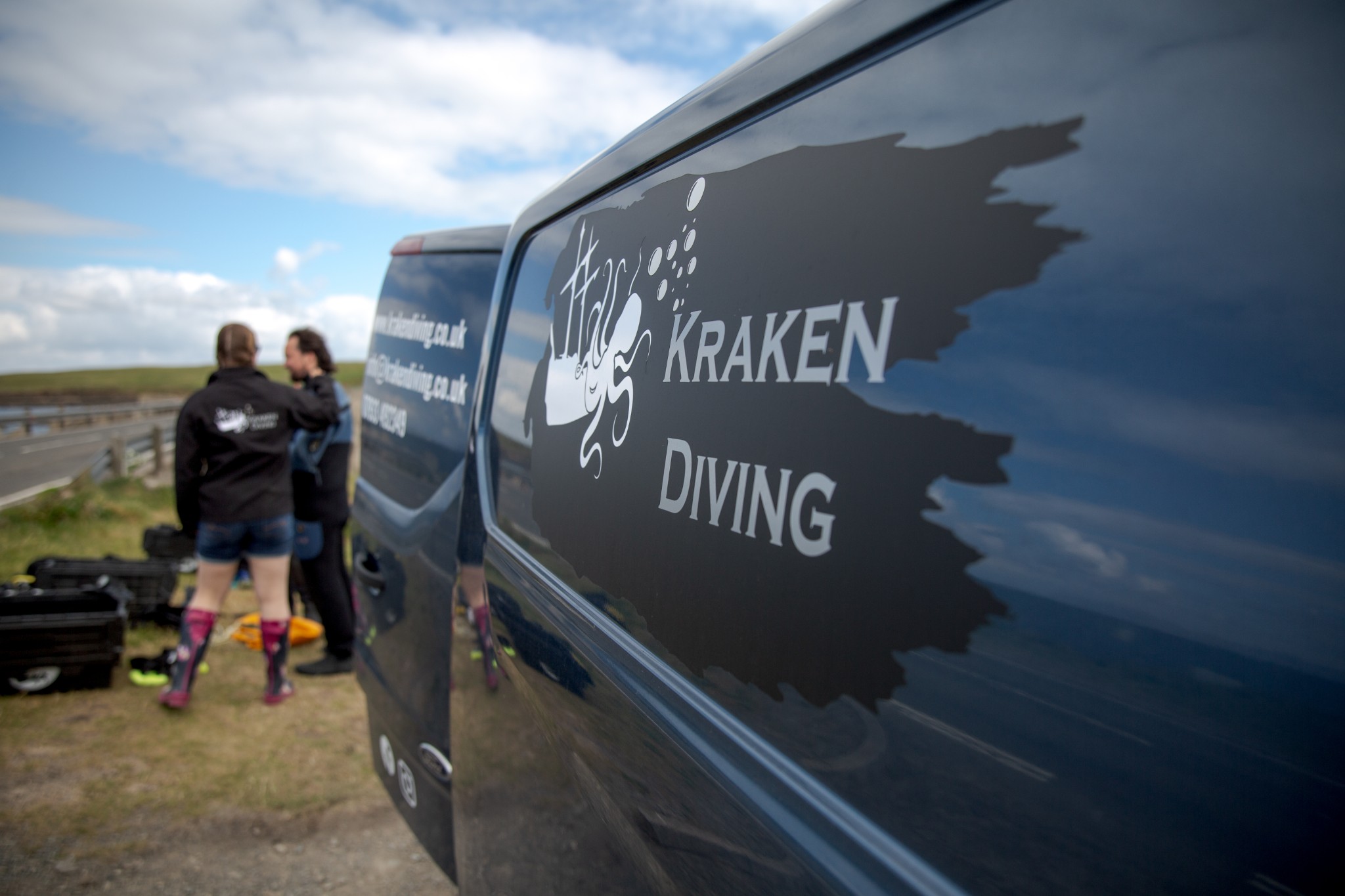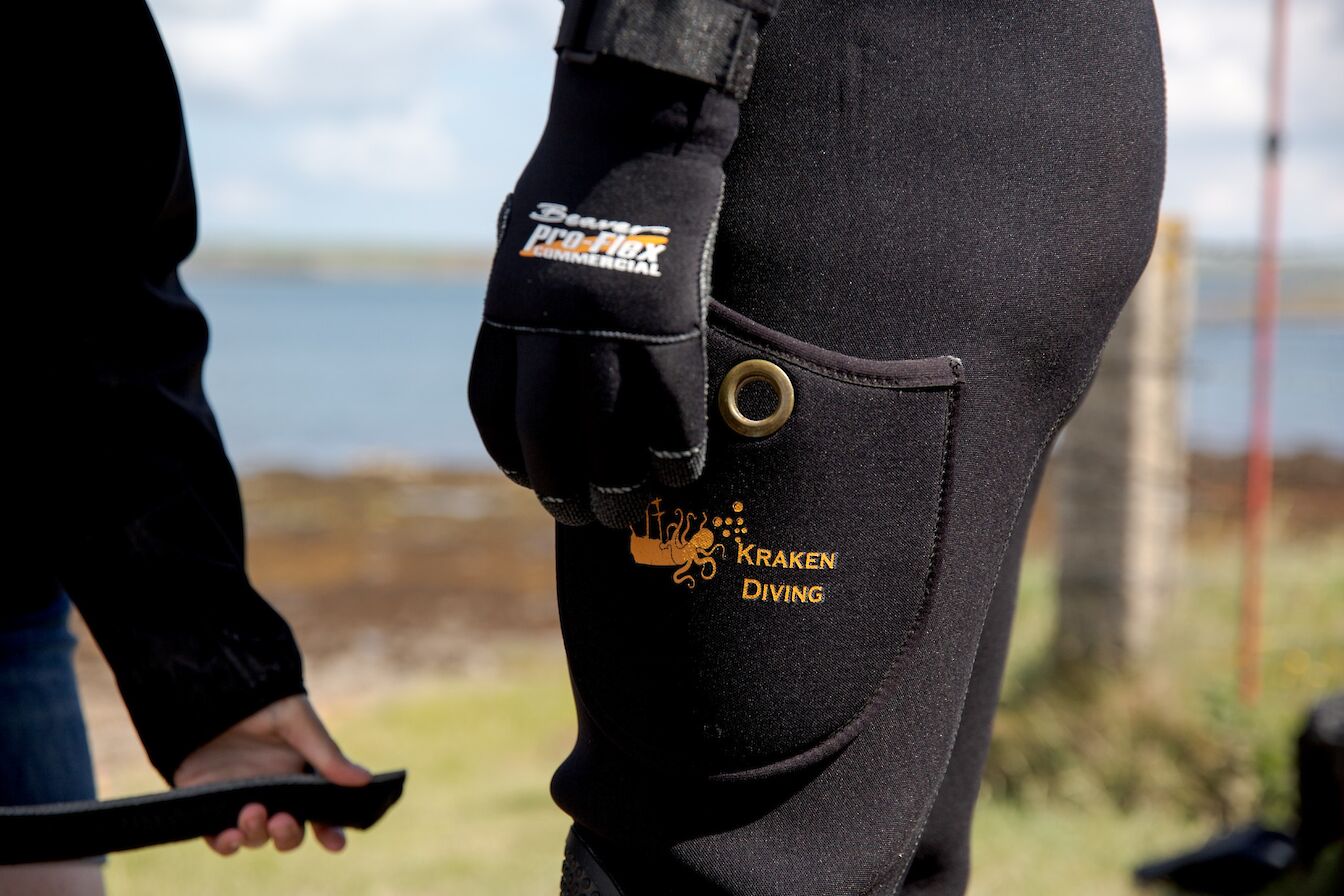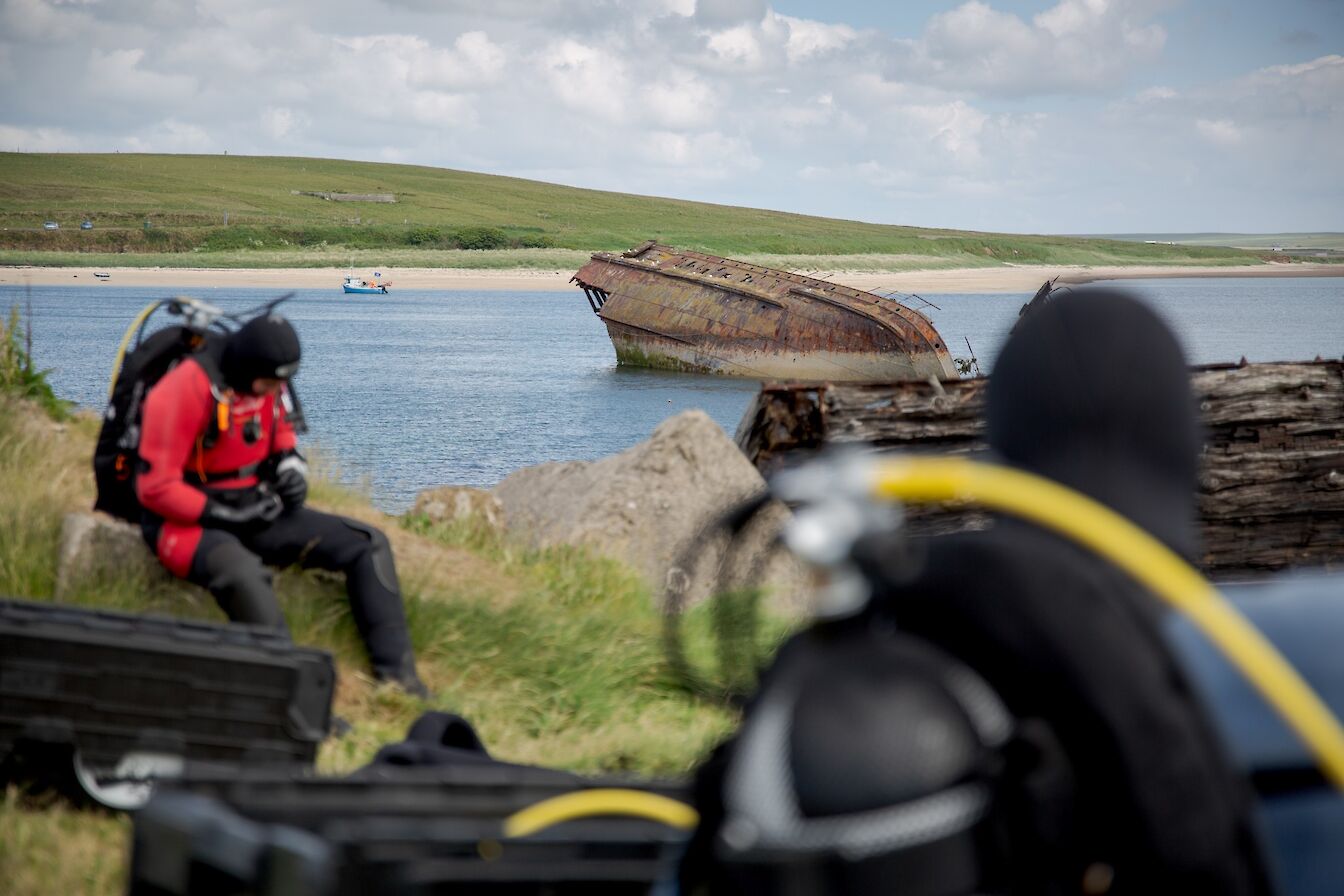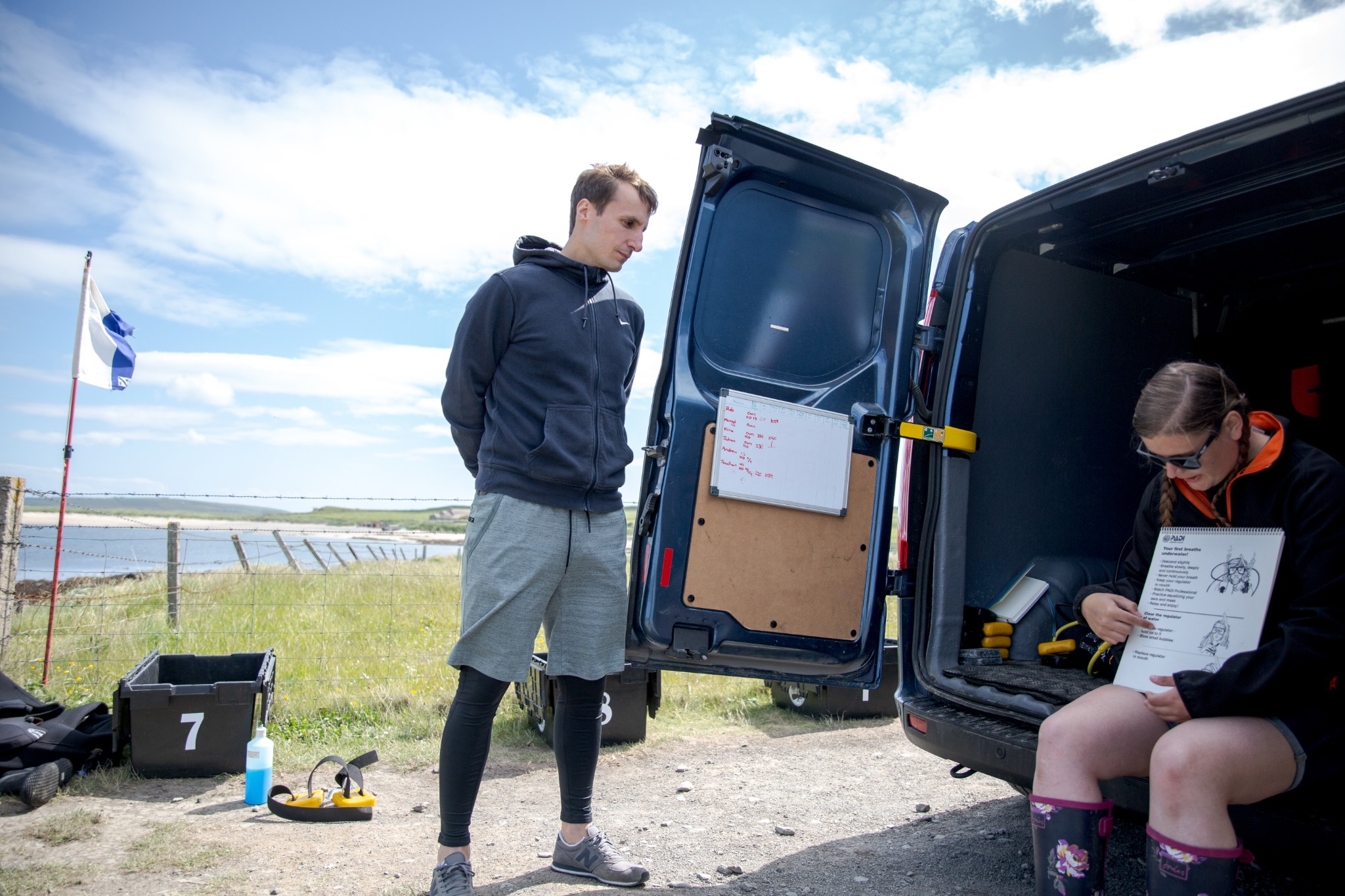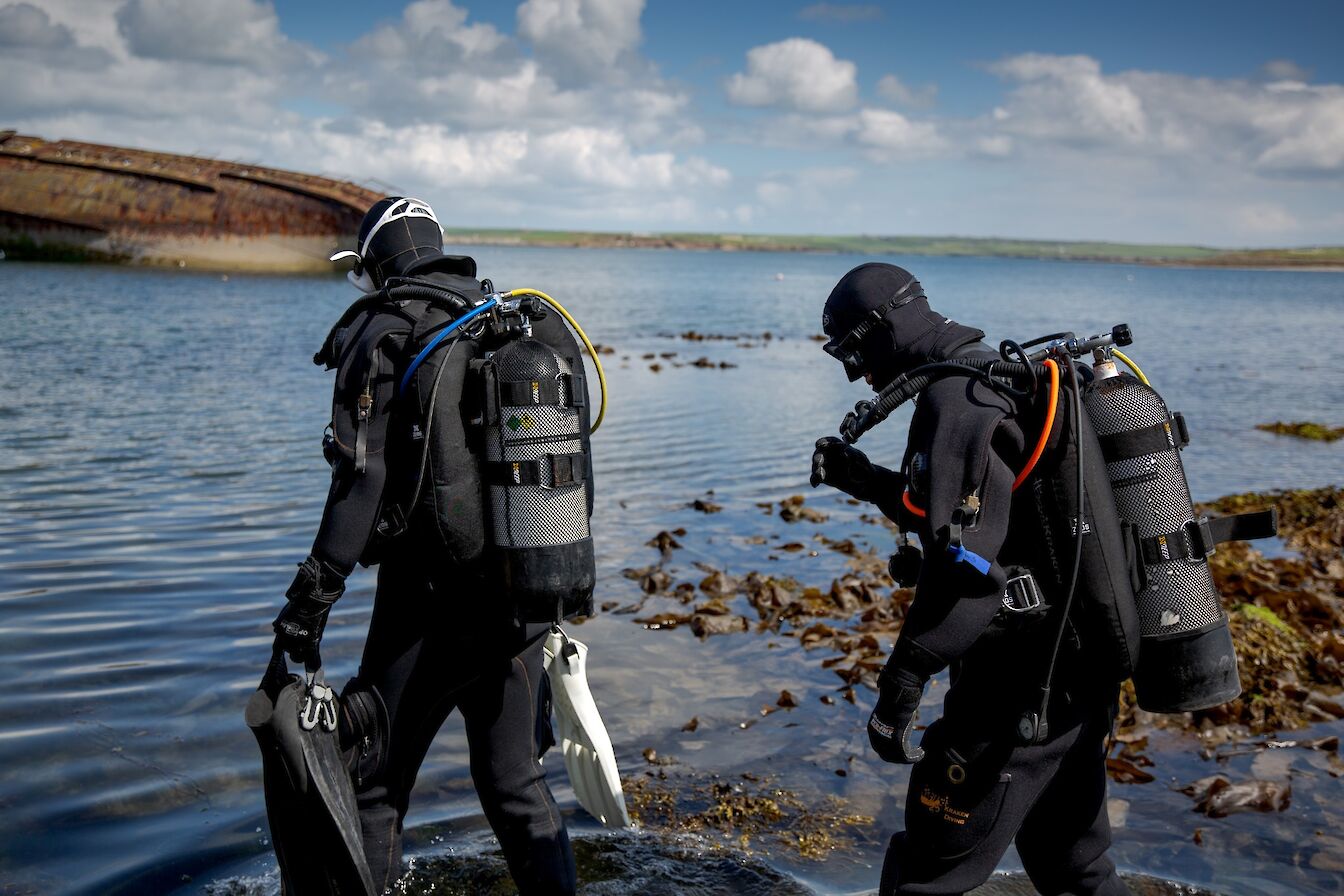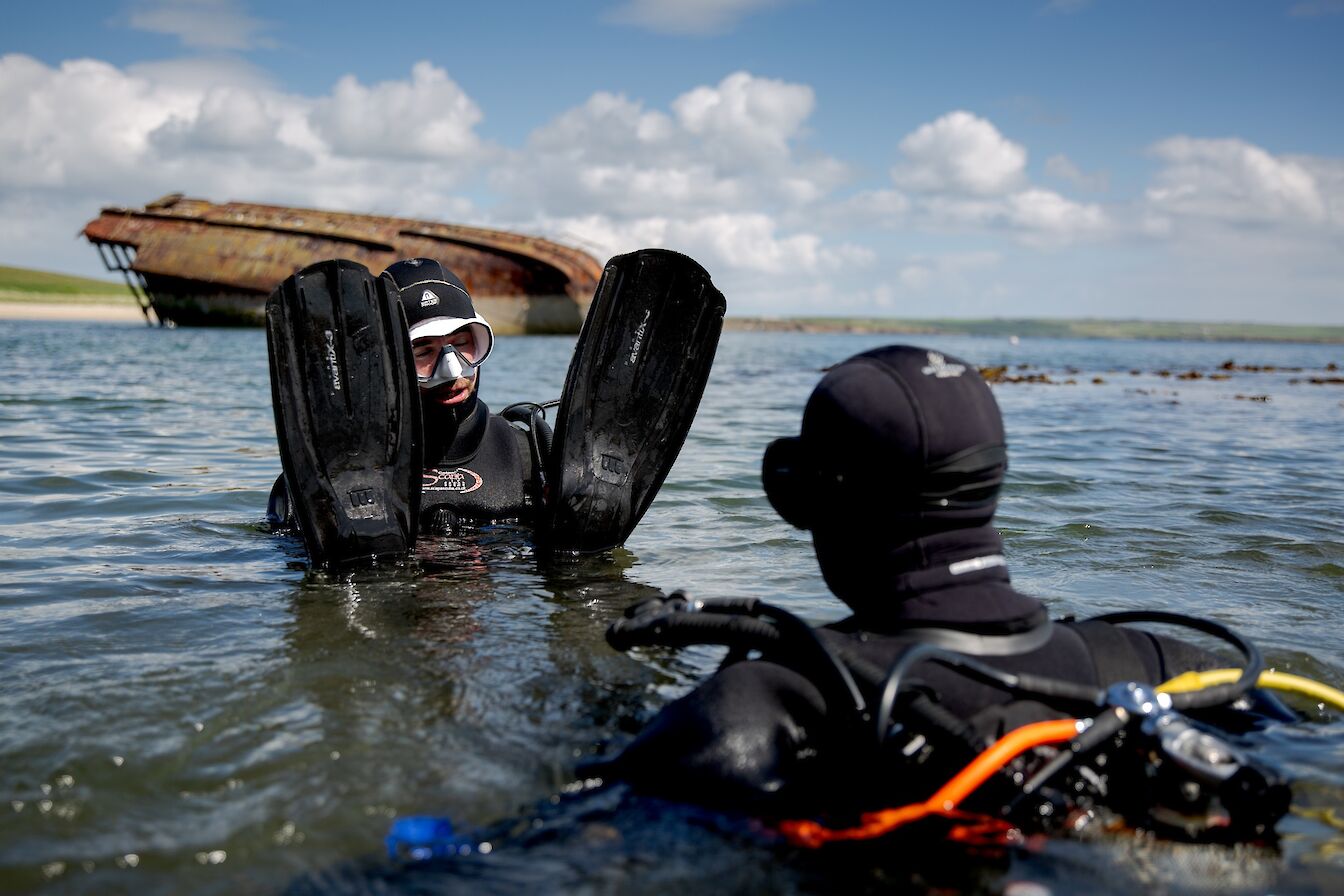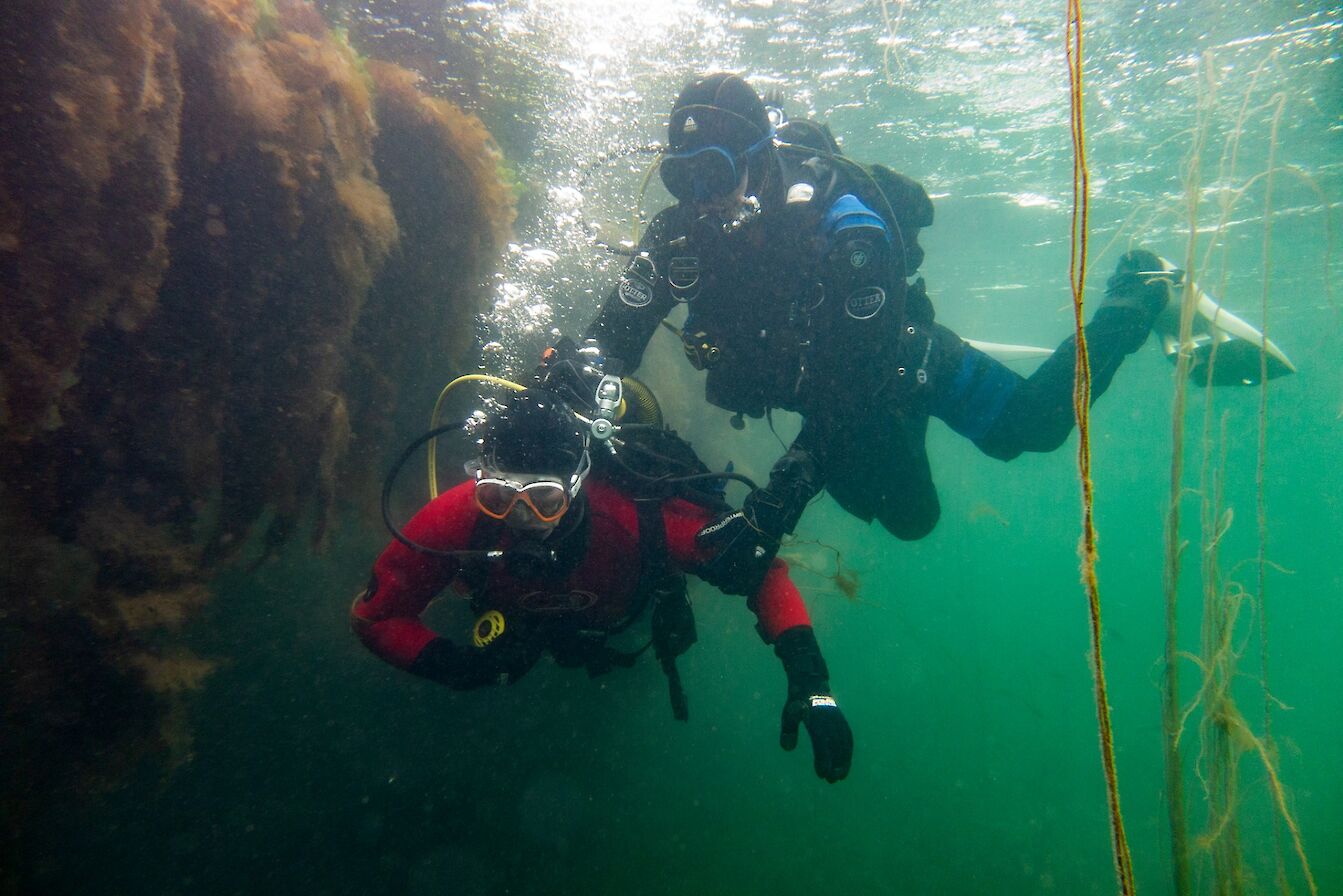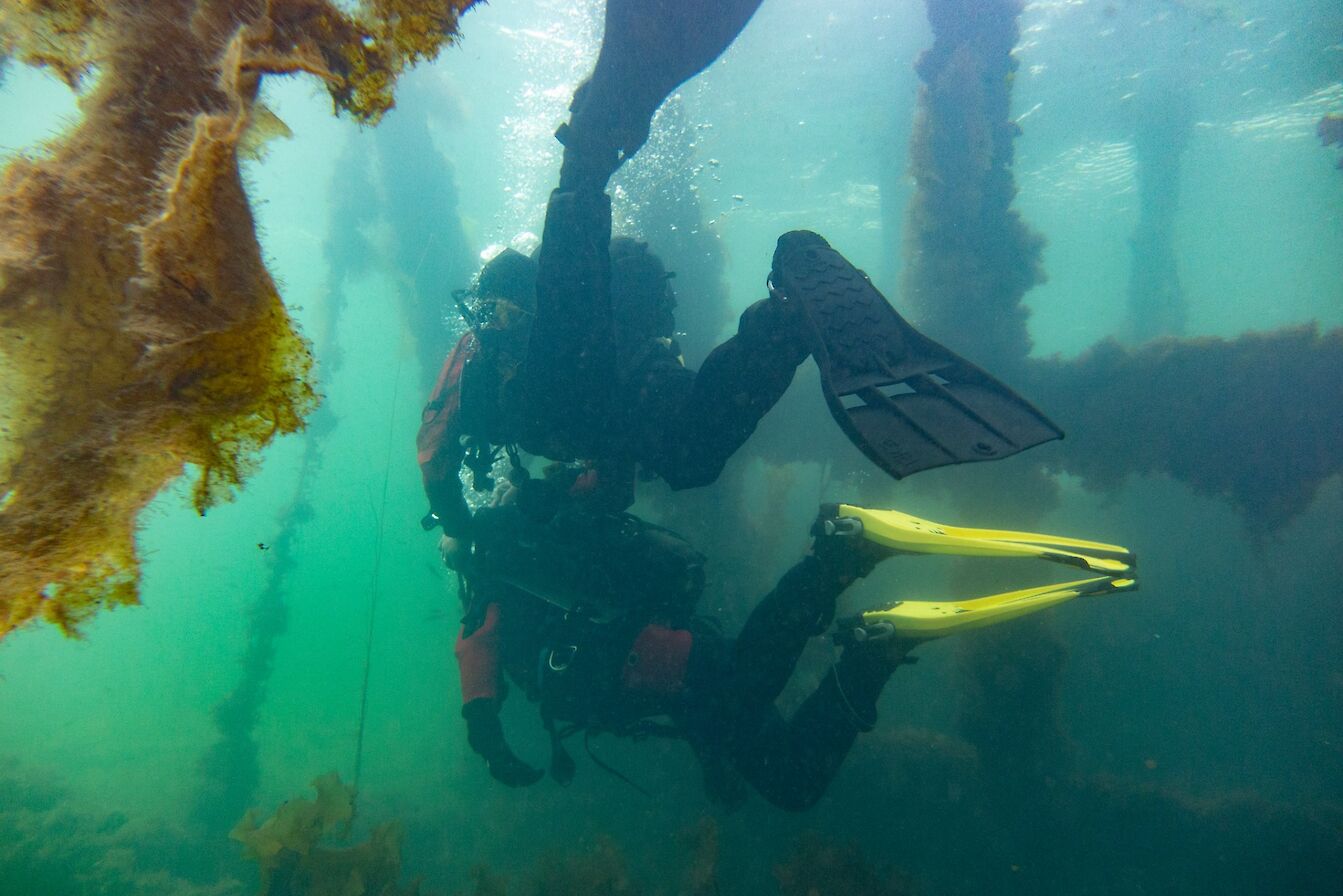“Most people experience try-a-dive sessions in a swimming pool,” says Rob Slight, as he slides into his dry suit. “Here though, they get to dive on a wartime wreck in Scapa Flow. It doesn’t get much better than that.”
Standing on the shore of this great natural harbour, in the shadow of one of the Churchill Barriers, it’s hard to disagree. The rusting hull of the Reginald rises out of the smooth sea just in front of us and we know we’ll be heading there, underwater, soon.
It’s a sunny June day in Orkney and we’re taking part in one of Kraken Diving’s ‘Discover Scuba Diving’ (DSD) sessions. It’s a brief introduction to life beneath the waves, with participants undergoing a safety briefing onshore and a skills test in the water, before setting off to explore one of the blockships at these causeways.
“Our DSD courses are held one to one, so you can experience everything under the surface without having to worry about learning all the ins and outs of the diving gear,” explains Rob.
The sessions are just part of what’s on offer at Orkney’s only dive school. Launched by Rob and Margot Watson in 2020, the business is perfectly placed to take advantage of Orkney’s reputation as a scuba diving mecca, as well as an increasing demand for ‘staycation’ holidays.
“There is so much amazing diving up here, and it has a really hardcore and scary reputation,” says Margot. “That’s just not the case, though. There are incredible things to see in the water, from marine life to shipwrecks, even for people that just want to stay on the surface.”
Indeed, the Kraken team offers all levels of diving, from DSD experiences to courses for those keen to learn the more technical side of diving. There are guided dives on the scuttled wrecks of the German High Seas Fleet, or you can join a snorkelling safari at the Churchill Barriers. There really is something for everyone.
Margot sits us down to give us our safety briefing as Rob heads into the water with another DSD customer. She takes out a flip chart and begins an overview of what we’ll be doing, what we’ll experience and some of the science behind a scuba dive.
The briefing covers the equipment we’ll be using, safety advice and some basic skills. There are a series of hand signals to master, including ‘okay’, ‘go up’, and ‘slow down’, and a quick quiz to make sure you’ve been listening.
It’s thorough but also relaxed and informal. For anyone unsure about the experience, Margot’s approach makes you feel completely comfortable.
As Rob emerges from the water with his DSD partner, it’s time to get into our equipment. It’s impossible to look elegant squeezing yourself into a dry suit, complete with neoprene gloves and hood, but you won’t worry about your appearance later; the main thing is keeping the cold water of Scapa Flow out.
Next, weight belts are added and our air tank is placed on our back, then we’re off on the short stomp to the water. Rob greets us as we step in and helps put our fins on. Then it’s time for our skills test.
Kneeling just below the surface, Rob demonstrates everything slowly and clearly before asking us to repeat his actions. We practice breathing through the regulator, searching for our air feed if it gets lost, and clearing our mask. It’s relatively simple stuff, but again the manner in which the demonstrations are carried out completely puts us at ease.
Then it’s time to set off towards the Reginald. For Rob, this is the best bit of the whole experience. “It can be a bit stressful for folk when they take their first breaths underwater as it’s not our natural environment,” he says. “But it’s lovely to see people get excited as they start swimming and begin exploring.
“For people that have never dived before, it’s quite an eye-opener.”
Rob holds on to us for the entire dive, so there’s no chance of getting disorientated or drifting off. It provides a sense of security and helps us relax and concentrate on what’s around us. Despite that, he still provides a helping hand in-front of our mask to point out a flatfish directly below us that we missed.
On we go along the Churchill Barrier and out to the wreck itself. Another hand appears – Rob is telling us to slow down. He’s absolutely right, as it’s an environment that you want to spend as much time as possible in. Sunlight streams down through the clean, clear water, illuminating the wreck in front of us. The seaweed covering its structure is a vibrant mix of green, yellow and brown. Hermit crabs scuttle on the seabed below us. There is something beautiful and something unexpected to see every single time you turn your head.
We surface at the stern of the wreck for a quick break, but it only involves rising a couple of metres. “That’s the beauty of diving here,” says Rob. “You get this amazing combination of historically significant wrecks and marine life, but also a lot of it is at accessible depths to all levels of divers.”
The best is yet to come. We head back down and Rob gently guides us inside the structure of the wreck. We can look through portholes into its interior before a left turn through a gap in the twisted metal takes us back out into the sunlight. From there it’s a short swim back to the Barrier.
All too quickly, this unique experience is over. Rob inflates our buoyancy control device to keep us afloat and helps us take our fins off. Then it’s back to the van to start the glamorous process of disrobing from our dry suit.
Nearby, Margot is already back in action, with a new DSD customer undergoing their briefing.
For us, it’s time to head home and a chance to think about where we’ve just been, and what we’ve just seen. As we climb into the car, we ask Margot if she’s looking forward to a busy summer season.
“Hopefully,” she replies as she checks the levels of an oxygen cylinder. “We’re water people and we want to be in the water as much as possible.”
After the experience we’ve just had, we think we might become water people too.
Find out more about Kraken Diving and the courses on offer at the official website.
You can also follow the team on Facebook and Instagram.
Read all about diving in Orkney.
